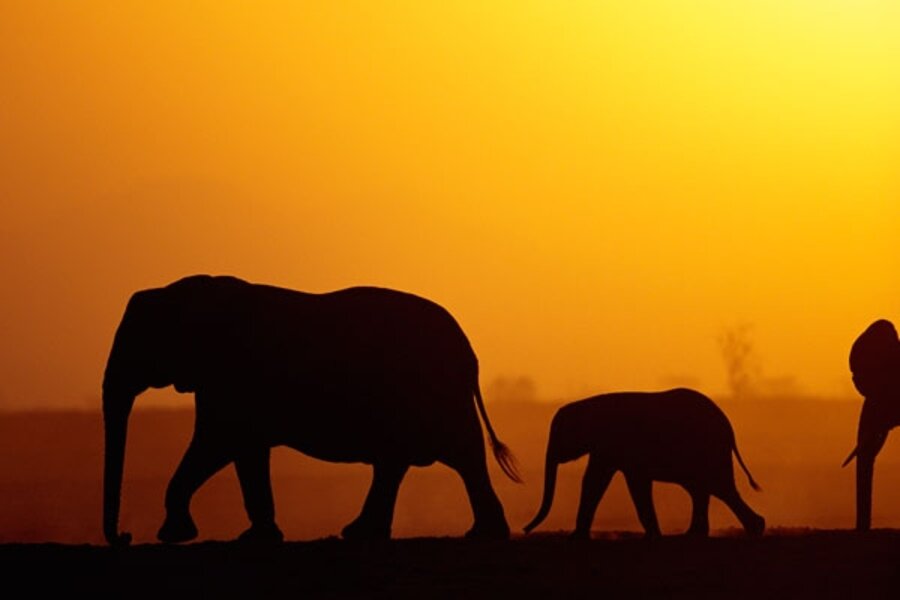National parks not always refuges for Kenyan wildlife
Loading...
Most of us tend to think of national parks as places that provide abundant protection for wildlife. But that's not necessarily so.
A recent study says that populations of elephants, giraffes, and other wildlife inside Kenyan national parks have declined at the same rate as animals living outside the parks – 40 percent from 1977 to 1997, with the steepest losses in the 1990s.
The problem isn't confined to Kenya. And it's not necessarily new. Some 2007 studies published in the African Journal of Ecology concluded: "For years, biologists in Africa have known that large mammals – including antelopes and their predators – were disappearing outside reserves. ... we have moved beyond this. We are losing species from national parks, bastion of biodiversity conservation. Worryingly, this includes the continent’s crown jewels such as Tanzania’s Serengeti National Park," reported Science Daily.
"What we're now beginning to understand is that the pressures around the parks are also affecting the wildlife in the parks," says David Western, an adjunct professor of biology at the University of California San Diego, who headed the newly released study, which was published in the July 8 issue of the journal PLoS One. He's a former director of the Kenyan Wildlife Service, which commissioned the study.
One big problem has been drought. Over the past two months, more than 40 elephants have died in northern Kenya, the result, the Kenya Wildlife Service says, of drought. They aren't able to get enough to eat. (An adult elephant consumes more than 650 pounds of food a day.)
Issues also arise from the whole practice of setting up parks and wildlife reserves:
Many animals that are used are used to migrating seasonally can create problems when confined within the boundaries of a park or refuge.
When elephants, for example, are not given the space they're used to, they eat the woody vegetation in the park. This changes the ecosystem from a wooded one to a grasslands habitat. And that leads to the loss of those animals, such as giraffes and impala, which need wooded areas.
People living in communities surrounding national parks can play a part in the losses because they may be antagonistic to the wildlife, seeing it as a threat to farming or their way of life. So they encourage poachers.
The biggest losses of wildlife come at the largest parks, the researchers found. That's partly because a big park is harder to patrol for poachers. And also because the communities surrounding smaller parks tend to be more connected to the parks and more favorable to their conservation goals.
Dr. Western, who was raised in Tanzania and has been studying wildlife in Kenya for 40 years, suggests that one aid to reversing the wildlife decline in parks would be for the government to share ecotourism profits with communities near national parks.
He also thinks that encouraging local involvement with national parks is a good idea for other areas, including the United States.





